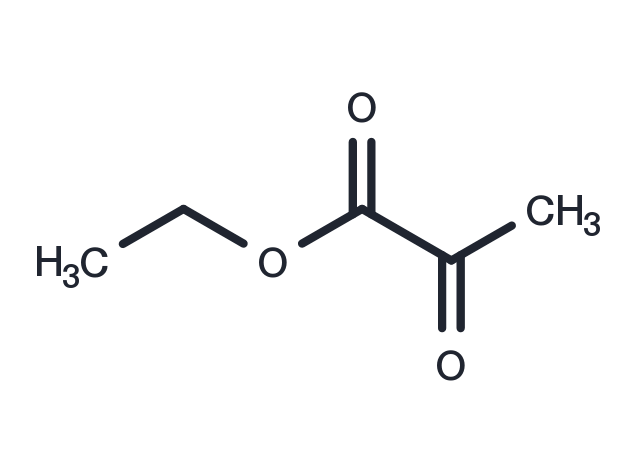Powder: -20°C for 3 years | In solvent: -80°C for 1 year


Ethyl pyruvate is a simple aliphatic ester of pyruvic acid and has been shown to have robust neuroprotective effects via its anti-inflammatory, anti-oxidative, and anti-apoptotic functions.

| Pack Size | Availability | Price/USD | Quantity |
|---|---|---|---|
| 100 mg | In stock | $ 41.00 | |
| 1 mL * 10 mM (in DMSO) | In stock | $ 50.00 |


| Description | Ethyl pyruvate is a simple aliphatic ester of pyruvic acid and has been shown to have robust neuroprotective effects via its anti-inflammatory, anti-oxidative, and anti-apoptotic functions. |
| Molecular Weight | 116.12 |
| Formula | C5H8O3 |
| CAS No. | 617-35-6 |
Powder: -20°C for 3 years | In solvent: -80°C for 1 year
DMSO: 25 mg/mL (215.3 mM)
You can also refer to dose conversion for different animals. More
bottom
Please see Inhibitor Handling Instructions for more frequently ask questions. Topics include: how to prepare stock solutions, how to store products, and cautions on cell-based assays & animal experiments, etc.
Ethyl pyruvate 617-35-6 Apoptosis oxidation-reduction Antioxidant anti-inflammatory Inhibitor pyruvic Ethyl Pyruvate acid inhibit inhibitor
